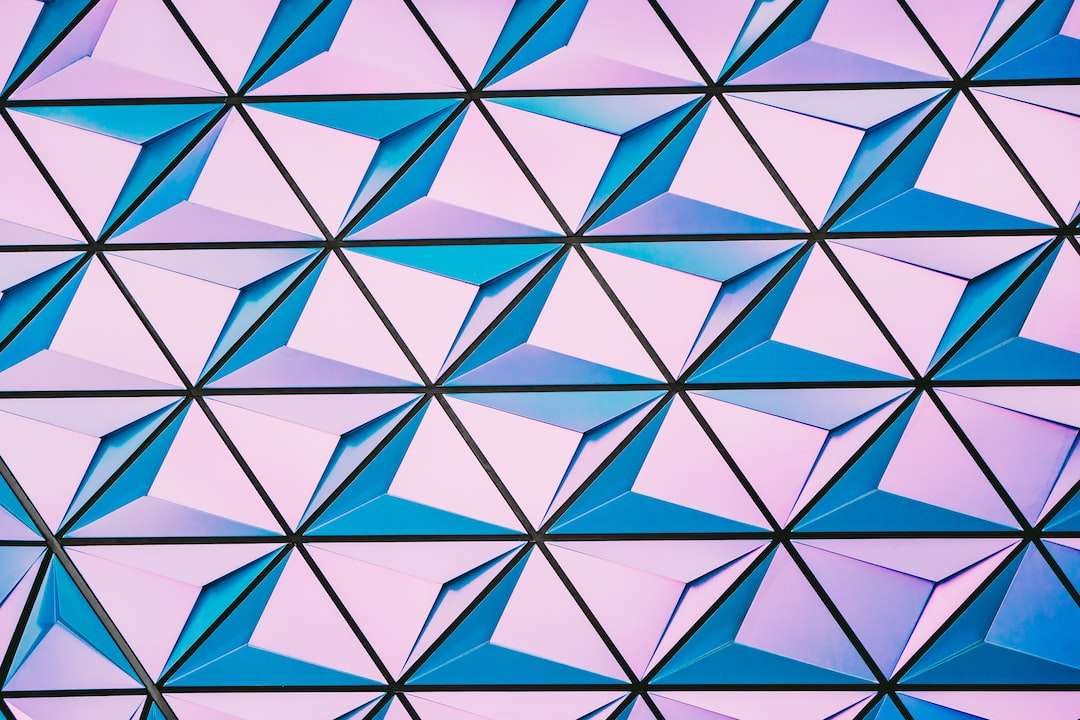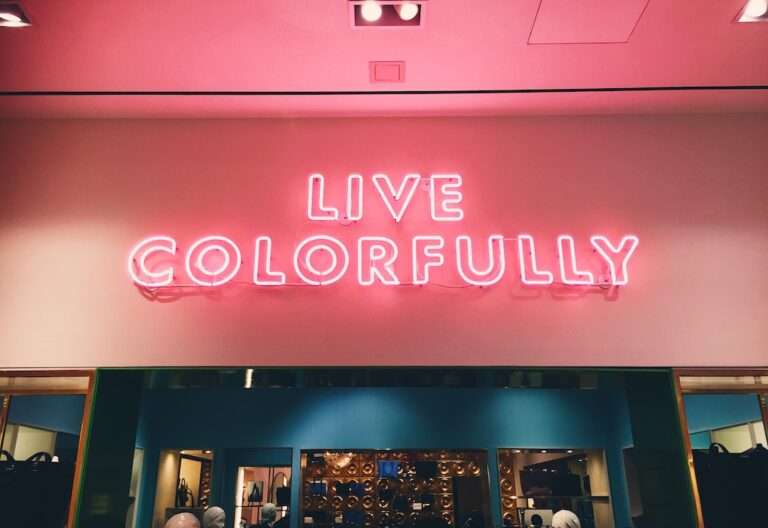The Hidden Meanings Behind Geometric Tattoos

Tattoos have been a part of human culture for thousands of years, with evidence of tattooing dating back to ancient civilizations such as Egypt and China. However, it is in recent times that geometric tattoos have gained popularity and become a prominent trend in the world of body art.
Geometric tattoos have evolved from the traditional tattoo designs that were prevalent in the past. They are characterized by their use of geometric shapes and patterns, often creating intricate and visually stunning designs. These tattoos have become increasingly popular due to their unique aesthetic appeal and the ability to convey deep meanings and symbolism.
In modern times, geometric tattoos have gained popularity among people from all walks of life. They are no longer limited to a specific subculture or group but have become a mainstream trend. This can be attributed to the rise of social media platforms, where people can showcase their tattoos and inspire others to get similar designs. Additionally, the advancement in tattooing techniques and equipment has made it easier for artists to create intricate geometric designs, further fueling the popularity of these tattoos.
Sacred Geometry: Understanding the Mystical and Spiritual Significance
Sacred geometry is a term used to describe the study of geometric patterns and shapes that hold spiritual and mystical significance. It is believed that these patterns can be found in nature, art, and architecture, and they represent the underlying order and harmony of the universe.
The spiritual and mystical significance of sacred geometry lies in its ability to connect individuals with a higher power or divine energy. It is believed that by understanding and incorporating these geometric patterns into our lives, we can achieve a sense of balance, harmony, and spiritual enlightenment.
Examples of sacred geometry can be found in various aspects of our daily lives. For instance, the Fibonacci sequence, which is a series of numbers where each number is the sum of the two preceding ones (0, 1, 1, 2, 3, 5, 8, etc.), can be seen in the spiral patterns of seashells and the arrangement of leaves on a plant. The Golden Ratio, another example of sacred geometry, can be found in the proportions of the human body and in famous works of art such as the Parthenon in Athens.
Symbolism in Geometric Tattoos: Decoding the Hidden Meanings
Geometric tattoos often incorporate various symbols that hold deep meanings and symbolism. These symbols can range from ancient symbols with cultural significance to more personal symbols that hold individual meaning for the wearer.
Common symbols used in geometric tattoos include the tree of life, which represents growth, strength, and interconnectedness; the lotus flower, which symbolizes purity and spiritual awakening; and the compass, which represents guidance and direction.
In addition to specific symbols, different shapes and patterns used in geometric tattoos can also convey different messages. For example, circles are often associated with unity and wholeness, while triangles represent balance and harmony. The use of lines and angles can symbolize strength and stability.
Examples of symbolic geometric tattoos can be seen in designs that incorporate a combination of shapes and symbols to create a unique and meaningful design. For instance, a tattoo that combines a triangle with an eye symbolizes protection and intuition.
The Power of Shapes and Patterns: Exploring Geometric Forms
The significance of different shapes and patterns in geometric tattoos lies in their ability to evoke certain emotions or convey specific meanings. Each shape has its own unique symbolism and can affect the overall design and meaning of a tattoo.
For example, squares are often associated with stability and structure, while circles represent unity and wholeness. Triangles can symbolize balance and harmony, while spirals are often associated with growth and transformation.
Patterns such as mandalas, which are geometric designs that represent the universe or the self, are often used in geometric tattoos to create a sense of balance and harmony. Other patterns, such as chevron or herringbone, can add visual interest and depth to a tattoo design.
Examples of different geometric forms used in tattoos can be seen in designs that incorporate intricate patterns such as tessellations or fractals. These designs create a mesmerizing effect and can be visually striking.
The Role of Color in Geometric Tattoos: Significance and Symbolism
Color plays a significant role in enhancing the meaning and symbolism of a geometric tattoo. Different colors have different meanings in various cultures and belief systems, and they can evoke certain emotions or convey specific messages.
For example, the color red is often associated with passion, energy, and power, while blue represents calmness, tranquility, and spirituality. Yellow is often associated with happiness and joy, while green represents growth and renewal.
In addition to individual color meanings, the combination of colors in a geometric tattoo can also convey specific messages. For instance, a tattoo that combines red and black may symbolize strength and protection, while a tattoo that combines blue and green may represent balance and harmony.
Examples of colorful geometric tattoos can be seen in designs that incorporate a variety of vibrant colors to create visually stunning and eye-catching designs. These tattoos often stand out and make a bold statement.
Geometric Animal Tattoos: The Connection between Nature and Sacred Geometry

Animals have held symbolic significance in different cultures and belief systems throughout history. They are often associated with specific traits or qualities that humans aspire to possess.
Incorporating animals into geometric tattoos allows individuals to connect with the natural world and tap into the symbolism associated with different animals.
For example, a lion symbolizes strength, courage, and leadership, while an owl represents wisdom, intuition, and knowledge. A wolf is often associated with loyalty, teamwork, and protection, while a butterfly represents transformation and rebirth.
Examples of geometric animal tattoos can be seen in designs that combine the geometric shapes and patterns with the image of an animal. These tattoos often create a visually stunning and meaningful design that represents the qualities and traits associated with the animal.
Geometric Mandala Tattoos: The Spiritual Journey of Self-Discovery
Mandalas have a long history and hold significant spiritual and cultural significance in various cultures and belief systems. They are often used as a tool for meditation and self-discovery.
A mandala is a geometric design that represents the universe or the self. It is often symmetrical and consists of intricate patterns and shapes. Mandalas are believed to help individuals achieve a sense of balance, harmony, and spiritual enlightenment.
Incorporating mandalas into geometric tattoos allows individuals to embark on a spiritual journey of self-discovery. These tattoos can serve as a reminder to stay centered, find inner peace, and connect with a higher power or divine energy.
Examples of geometric mandala tattoos can be seen in designs that incorporate intricate patterns and shapes to create a visually stunning and spiritually meaningful design. These tattoos often have a mesmerizing effect and can be visually striking.
Geometric Tribal Tattoos: The Cultural Significance and Identity
Tribal tattoos have a long history and hold significant cultural significance in different indigenous cultures around the world. They are often used to represent identity, status, and cultural heritage.
Incorporating tribal designs into geometric tattoos allows individuals to connect with their cultural roots and express their identity through body art.
Examples of geometric tribal tattoos can be seen in designs that combine traditional tribal patterns with geometric shapes and patterns. These tattoos often create a visually striking design that represents cultural heritage and personal identity.
Geometric Dotwork Tattoos: The Art of Precision and Perfection
Dotwork tattoos have gained popularity in recent years due to their unique aesthetic appeal and the intricate designs that can be created using only dots. Dotwork tattoos involve the use of thousands of tiny dots to create a larger image or pattern.
The history and significance of dotwork tattoos can be traced back to ancient cultures such as the Maori and Polynesians, who used dotwork techniques to create intricate designs on their skin.
Incorporating dotwork into geometric tattoos allows individuals to create visually stunning and highly detailed designs that require precision and patience.
Examples of geometric dotwork tattoos can be seen in designs that incorporate intricate patterns and shapes created using only dots. These tattoos often have a mesmerizing effect and can be visually striking.
Geometric Sleeve Tattoos: The Ultimate Expression of Personal Identity and Beliefs
Sleeve tattoos have gained popularity in recent years as individuals seek to express their personal identity and beliefs through body art. A sleeve tattoo is a large tattoo that covers a significant portion of the arm, from the shoulder to the wrist.
The significance of sleeve tattoos lies in their ability to tell a story or represent a person’s journey, beliefs, or interests. They allow individuals to express their individuality and create a unique and meaningful design that is personal to them.
Incorporating geometric designs into sleeve tattoos allows individuals to create visually stunning and highly detailed designs that represent their personal identity and beliefs.
Examples of geometric sleeve tattoos can be seen in designs that incorporate a combination of shapes, patterns, symbols, and colors to create a visually striking and meaningful design. These tattoos often serve as a form of self-expression and can be a powerful representation of personal identity and beliefs.
In conclusion, geometric tattoos are a unique and meaningful way to express personal identity and beliefs. From the spiritual significance of sacred geometry to the symbolism of different shapes and patterns, there are endless possibilities for creating a one-of-a-kind geometric tattoo. Whether it’s a small symbol or a full sleeve, a geometric tattoo can be a powerful expression of personal identity and beliefs.
If you’re fascinated by the intricate designs and hidden meanings behind geometric tattoos, you’ll definitely want to check out this article on the symbolism of the star. Geometric tattoos often incorporate stars as a powerful symbol of guidance, inspiration, and spirituality. This article explores the various interpretations and cultural significance of stars in different societies throughout history. Discover how a simple geometric shape can hold such profound meaning by clicking here.
FAQs
What are geometric tattoos?
Geometric tattoos are designs that use geometric shapes and patterns to create a tattoo. These shapes can include triangles, circles, squares, and other shapes.
What is the meaning behind geometric tattoos?
The meaning behind geometric tattoos can vary depending on the individual and the specific design. However, some common meanings include balance, harmony, and symmetry.
What are some popular geometric tattoo designs?
Some popular geometric tattoo designs include mandalas, sacred geometry, and dotwork. These designs often incorporate intricate patterns and shapes.
What is the history of geometric tattoos?
Geometric tattoos have been around for centuries and have been found in many different cultures. They were often used in tribal cultures as a way to represent spiritual beliefs and cultural identity.
What should I consider before getting a geometric tattoo?
Before getting a geometric tattoo, it is important to consider the placement, size, and design of the tattoo. It is also important to choose a reputable tattoo artist who has experience with geometric designs.
Do geometric tattoos have any cultural significance?
Geometric tattoos have cultural significance in many different cultures, including Native American, Polynesian, and Maori cultures. These tattoos often represent spiritual beliefs and cultural identity.





